This is the start of year four for Gee Scott, Jr. at tight end, but because he came to Ohio State as a wide receiver, he can’t really talk about where he’s going without being asked about where he’s been.
Scott came to Ohio State as a 210-pound wide receiver in 2020. One year later, he moved to tight end. Now, after three years of growth, development, and playing time, he’s a 245-pound tight end with 20 career catches and nearly 500 snaps under his belt the past two seasons.
But the questions about his time at Ohio State and the process of becoming a tight end remain.
When Gee Scott, Jr. met with reporters this spring, he was asked if he finally felt like a tight end.
“Yeah, no, 100%. From the moment I stepped in there, I’ve been a tight end,” he said. “That’s the mindset I took on. I understand where you’re coming from, coming in at initially 210 pounds to where I’m at now, it is a dramatic change. But yeah, man, I’m part of the unit. More of a tight end than ever and ready to roll.”
Scott’s path to the tight end room will always be part of his story, and for good reason — this is not an easy transition. Others have done it before him, and nobody’s ever come out and said it was a piece of cake.
What has been the most challenging aspect of the move for the 6-foot-3 Scott?
“Definitely the size component,” he said. “You’ve got to be big, you’ve got to be strong, you’ve got to be fast. There’s a lot of jobs that you have to do. You need to block some of the biggest guys on the field, but also run routes on some of the smallest guys on the field.”
As Ohio State head coach Ryan Day describes the tight end position, you have to be able to go from blocking defensive ends like JT Tuimoloau and Jack Sawyer, to running routes against defensive backs like Denzel Burke and Caleb Downs. To say that it requires a unique skill set would be understating the meaning of unique.
Scott has always been up for the challenge, however, because he knew none of it was going to be easy.
“I’ve come a long way,” he said. “I’d argue to say tight end is probably the most developmental position on the field. It takes a long time to get around to it. It takes a lot of work. It’s is a full process. It is not something that’s a one-year turnaround, or a six-month turnaround, you come in, you try to just catch it on the fly. It’s something that takes a lot of time and attention.”
It is rare for any Ohio State tight end to factor into the offense early in their career. The amount of physical and mental development is a time-consuming process. All of this is made even more challenging when there is a position switch involved.
In fact, that has been the story for Ohio State’s starting tight end the last two years. Cade Stover also made the move to tight end (from defense) and posted 77 receptions the past two years. His biggest season came last year as a fifth-year senior. He posted 41 receptions for 576 yards and five touchdowns.
Now in his fifth season himself, Gee Scott, Jr. credits past OSU tight ends like Stover and Jeremy Ruckert for helping him in his development. He saw both of those players grow each year, leading to each of them hearing their respective names called in the NFL Draft.
There is no such thing as an overnight success at tight end, but that doesn’t mean ground can’t be gained each and every day.
“I kind of look at it as if it’s like a drop in the bucket,” Scott explained. “You know, if I got a big bucket, there’s no one thing I’m gonna do to make this bucket full. It’s a daily thing where I put one drop in it a day, and you look back over a year, two years, three years, you’ll look back and be like, ‘Man, I’ve gotten a lot better.’ I’m just very thankful for the unit. The guys that I have around me pushed me very hard. And I’m just thankful.”

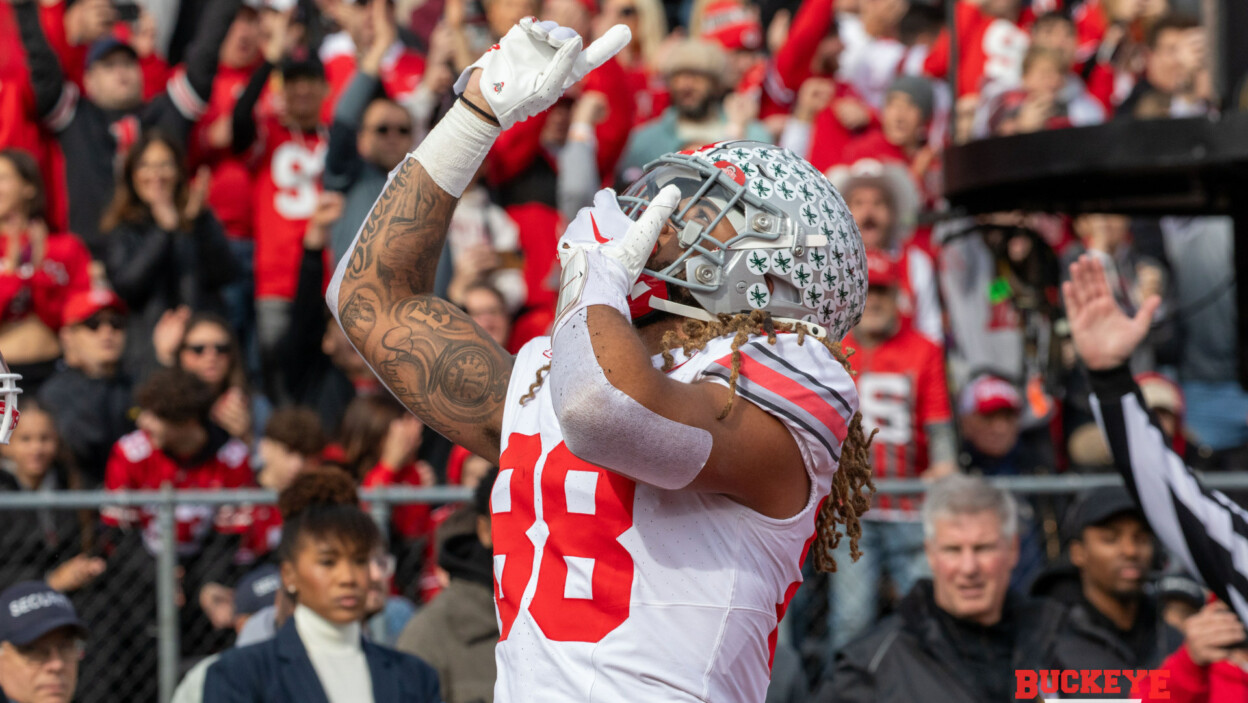
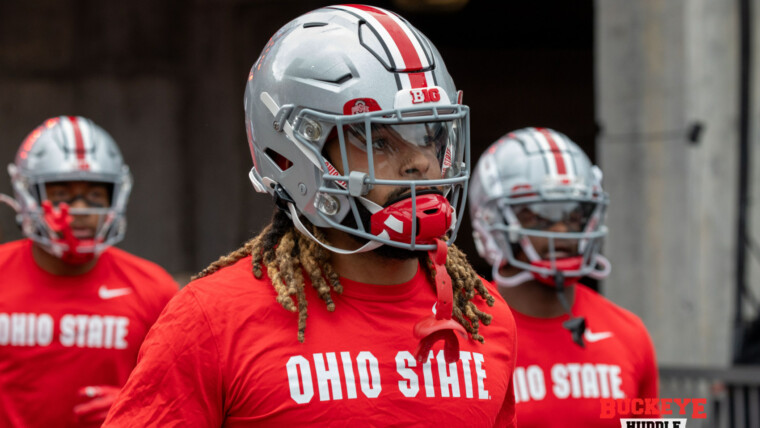
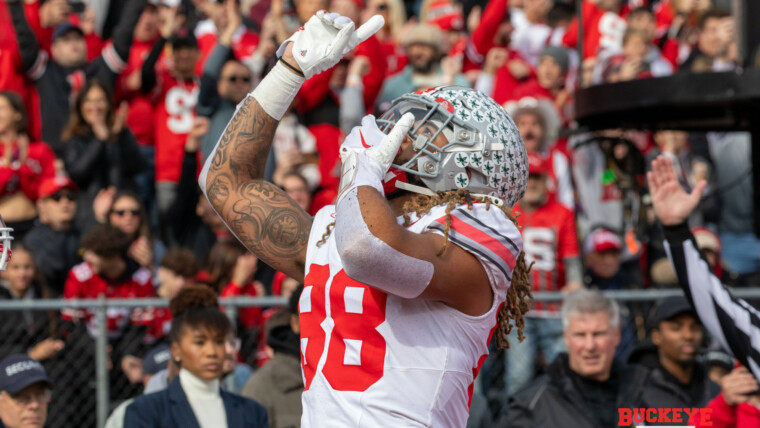

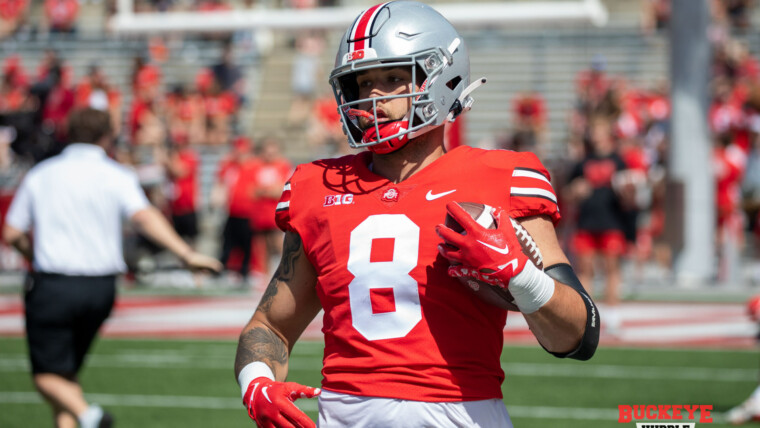

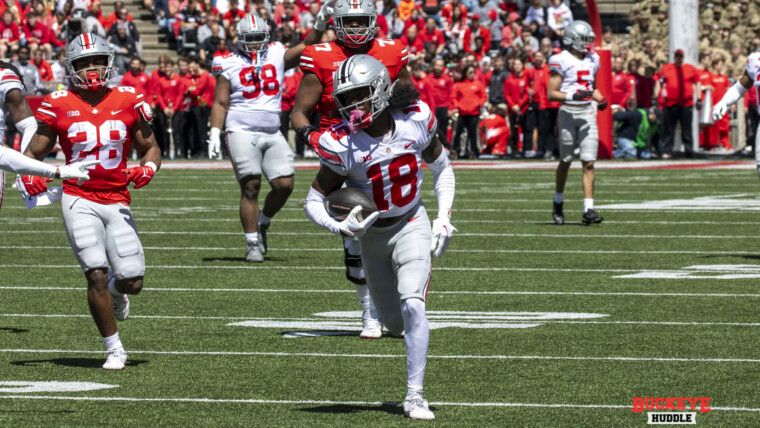
7 comments
Denzel Burke Seeing More And More To Like From Will Howard
Sherrone Moore On Playing Ohio State Multiple Times This Year: ‘Love It. Yes. Let’s Do It’
Ryan Day’s Message For The Michigan Game This Year? ‘Leave No Doubt’
Closer Look: James Peoples Ready For Significant Role This Year?
Big Ten Bluebloods Being Challenged By Oregon
Ryan Day Expecting A Number Of True Freshmen Buckeyes To Play This Year
Sherrone Moore On Playing Ohio State Multiple Times This Year: ‘Love It. Yes. Let’s Do It’
Archie Griffin To Dot The i In Buckeyes’ Season Opener